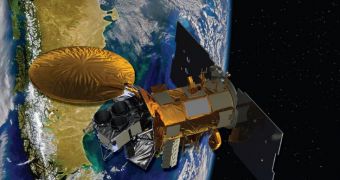The first spacecraft built by NASA and the Comisión Nacional de Actividades Espaciales (CONAE), the national space agency of Argentina, has arrived in California, in anticipation of a launch data later this year. The satellite will be conducting measurements of ocean salinity from orbit.
After undergoing rigorous tests for the past few months, the spacecraft has now been delivered to the Vandenberg Air Force Vase (VAFB), in California. It is scheduled to take off on June 9, aboard a Delta II delivery system.
According to experts at the Pasadena, California-based NASA Jet Propulsion Laboratory (JPL), the Aquarius/SAC-D mission will provide the much-needed connection between the global balance of freshwater, ocean circulation and climate.
Studies of climate change have already taken a hit of NASA since 2009, on account of the fact that its last two climate satellites, the Orbiting Carbon Observatory and the Glory spacecraft, were lost at launch. The Taurus XL delivery systems that carried them are to blame for the failure.
In the new mission, the US and Argentina are also collaborating with colleagues from Italy, France, Brazil and Canada. NASA is contributing the primary instrument of the mission, the Aquarius.
Its main job will be to analyze the oceanic surface, and measure variations in the concentration of dissolved salts that permeate the waters. This type of study is critical towards understanding the planet's water cycles.
Data on salinity can reveal how freezing or melting ice, rainfall and evaporation influence climate changes around the world, or the oceanic circulation patterns. The SAC-D spacecraft will spend the next three years investigating these correlations.
“Just as salt is essential to life as we know it, salinity is crucial to Earth's climate system. Very small changes in salinity can have large-scale effects on ocean circulation and the way the ocean moderates our climate,” says Gary Lagerloef
“These changes are linked to the movement of water between the ocean, atmosphere and cryosphere,” adds the expert, who is the principal investigator of the Aquarius instrument. He is based in Seattle, at Earth and Space Research.
“When combined with data from other sensors that measure sea level, ocean color, temperature, winds, rainfall and evaporation, Aquarius' continuous, global salinity data will give scientists a much clearer picture of how the ocean works, how it is linked to climate and how it may respond to climate change,” Lagerloef explains.
“The mission continues a long and successful partnership between NASA and CONAE, and it will provide a new type of ocean observation for ocean and climate studies,” concludes JPL Aquarius project manager Amit Sen.

 14 DAY TRIAL //
14 DAY TRIAL //